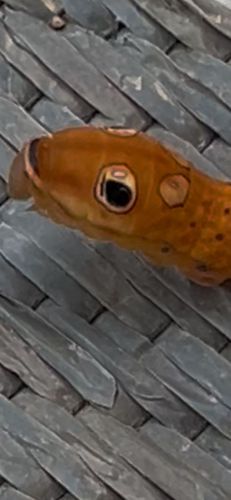Spicebush Swallowtail Caterpillar
Scientific Name: Papilio troilus
Order & Family: Order: Lepidoptera, Family: Papilionidae
Size: Mature caterpillars can reach lengths of approximately 3.5 to 5 cm (about 1.4 to 2 inches).

Natural Habitat
Spicebush Swallowtail caterpillars are typically found in deciduous forests, woodlands, swamps, and along forest edges where their host plants are present. Their range extends across much of the eastern United States.
Diet & Feeding
The primary diet of the caterpillar consists of the leaves of plants in the laurel family, such as spicebush (Lindera benzoin), sassafras (Sassafras albidum), sweetbay magnolia (Magnolia virginiana), and redbay (Persea borbonia).
Behavior Patterns
This caterpillar is known for its excellent camouflage, often resembling bird droppings in early instars and then later mimicking snakes or twigs. When threatened, they can evert an orange, Y-shaped organ called an osmeterium from behind their head, which emits a foul-smelling substance to deter predators. They are solitary feeders.
Risks & Benefits
There are no known direct risks to humans from Spicebush Swallowtail caterpillars. They are beneficial insects as they are part of the food chain and, as adults, the butterflies are important pollinators for various flowering plants. They are a sign of a healthy ecosystem.
Identified on: 9/1/2025